Light the Batsignal for the late Mr. Brown…

Great week for Bob Brown, the late comics artist who was one of the Batman stalwarts of the late Silver Age/early Bronze Age.
This week, DC is publishing the Detective Comics #411 Facsimile Edition, featuring the first appearance of Talia, pencilled by Brown and inked by Dick Giordano. And over the next week or so, TwoMorrows will be shipping its much anticipated Back Issue #150, spotlighting the unsung Batman artists of the 1970s. So, our pal and BI contributor Steven Thompson has put together 13 REASONS BATMAN ARTIST BOB BROWN DESERVES MORE CREDIT.
Dig it.
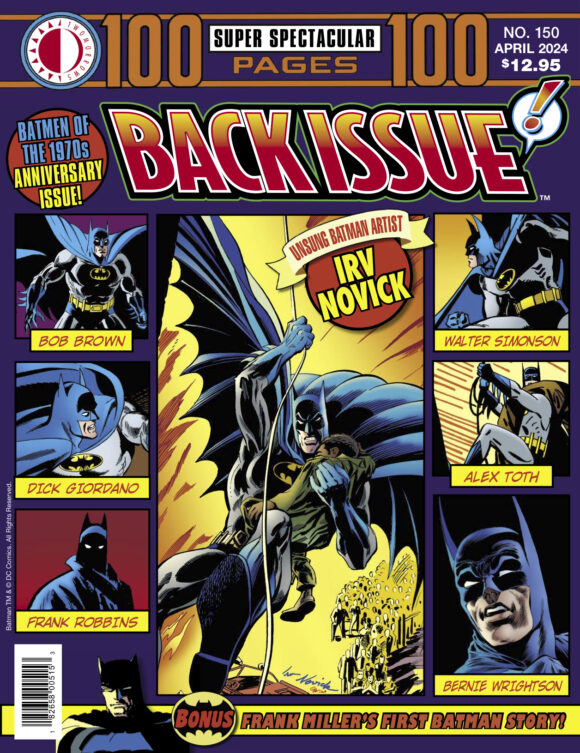
By STEVEN THOMPSON
Along with Irv Novick, Bob Brown remains one of the great unsung Batman artists of the post-“Bob Kane” era. Issue #150 of Michael Eury’s Back Issue from TwoMorrows covers both of these artists as well many other Batman illustrators of the Bronze Age.
Between 1968 and 1973, Bob Brown drew 42 Batman stories. His work was overshadowed by that of Neal Adams, who essentially created the 1970s Newer Look Batman that superseded the Infantino/Giella/Anderson New Look version of the 1960s.
Brown is remembered as the co-creator of DC’s Space Ranger, Jack Kirby’s replacement on Challengers of the Unknown, and a longtime artist (often inked by Wallace Wood or Anderson) on Superboy. For Marvel, he had a run on the pre-Miller Daredevil, as well as some Avengers stories and some fill-in strips here and there.
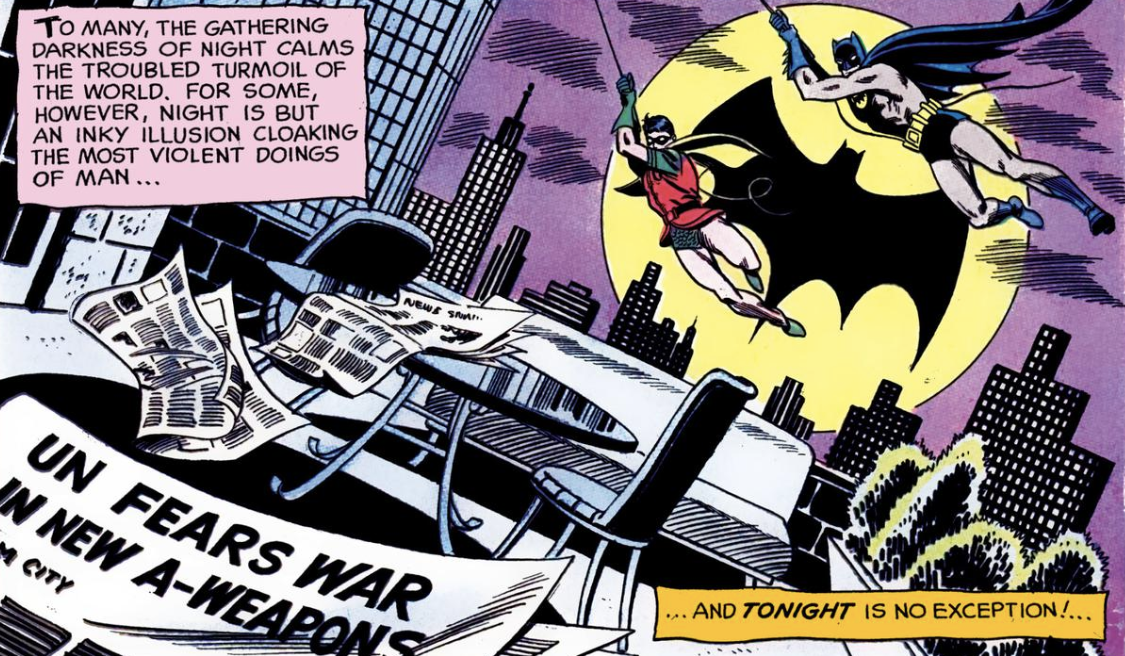
Most of Brown’s Bat-work was written by Frank Robbins and inked by Joe Giella, Frank Giacoia, or Dick Giordano, and below are various examples you might want to check out before (or after) you read my article about his time in Gotham, in Back Issue #150.
Here are 13 REASONS BATMAN ARTIST BOB BROWN DESERVES MORE CREDIT:
—
The Brave and the Bold #78, “In the Coils of the Copperhead” (July 1968). Bob’s first time out drawing the Caped Crusader, this Bob Haney story is more than a tad campy as the Batman TV series was still running at the time. With no Robin anywhere in sight, Batman concocts an elaborate plan to catch a snake-themed villain called the Copperhead. The plan calls for both Batgirl and Wonder Woman to pretend to fall in love with him. Wonder Woman is shown flying under her own power while Batgirl has a mini-Batplane with hovering capabilities. Sure. Why not? Bats’ goofy plan is fouled up when the two ladies actually do fall for him and their rivalry becomes more serious. At this stage, Brown had trouble drawing the cowl correctly. He got better.
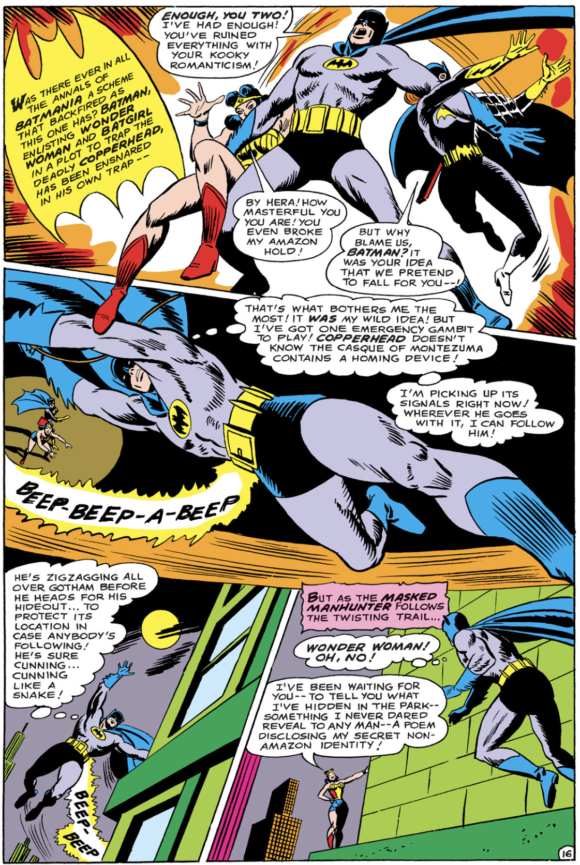
—
Detective Comics #380, “Marital Bliss Miss” (October 1968). The TV series was gone by this point but the camp wasn’t quite over. A bouncy young woman named Ginny shows up at Wayne Manor claiming to be Mrs. Bruce Wayne. Surprisingly, Bruce goes along with her… at first. When they’re alone, she claims the ruse is to save Bruce from her brother, leading to a convoluted bank robbery plot. Later, Ginny’s story even got a sequel! The artist has the mask down by this point and his solid storytelling and a couple of more inventive pages highlight the story.
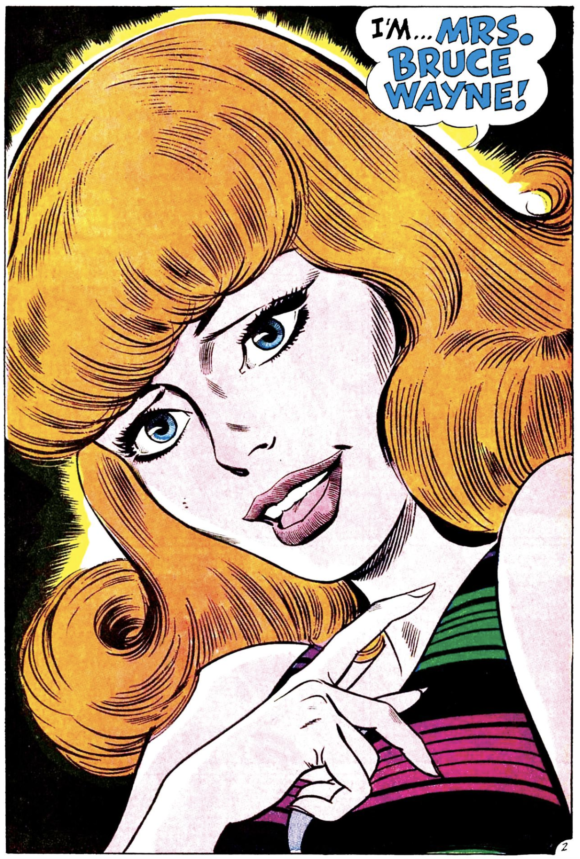
—
Detective Comics #383, “The Fortune Cookie Caper” (January, 1969). This one has to be seen to be believed. Different times, y’know? Coming on the heels of Frank Robbins’ infamous, cluelessly racist Flash two-parter, here we have the Dynamic Duo getting involved with Asian smugglers after they stop for dinner at a Chinese restaurant. Just about every cliché you could think of regarding Chinese people, Chinese cuisine, and Chinese restaurants is thrown in. Brown contributes a beautifully choreographed double page fight scene toward the end.
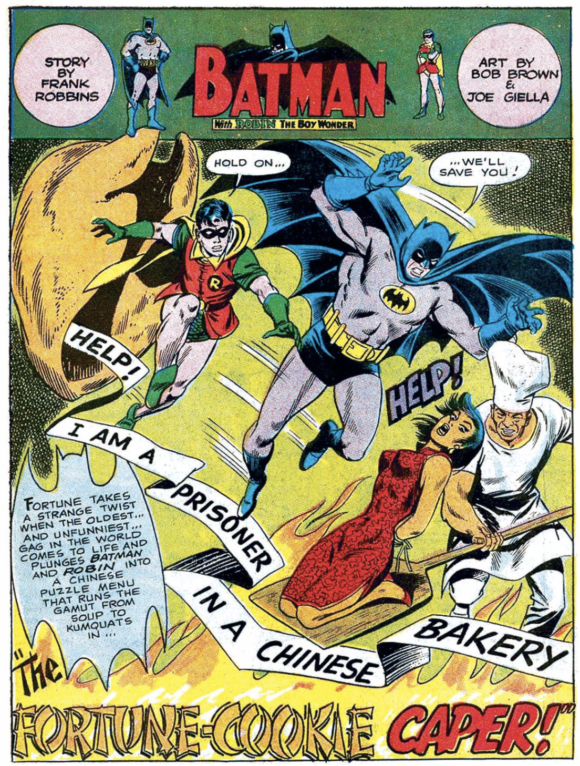
—
Detective Comics #387, “The Cry of Night is… Sudden Death!” (May, 1969). This was the 30th anniversary of Batman’s first appearance in Detective #27. Young Mike Friedrich was the writer this time out, giving Bob Brown a brand-new modernized story to draw, based on the plot of the very first Batman story, The Case of the Chemical Syndicate. For later anniversaries, other writers would continue this tradition. The addition of Robin in this version allows for a generation gap theme not present in the original. Brown’s opening double-page spread is classic!
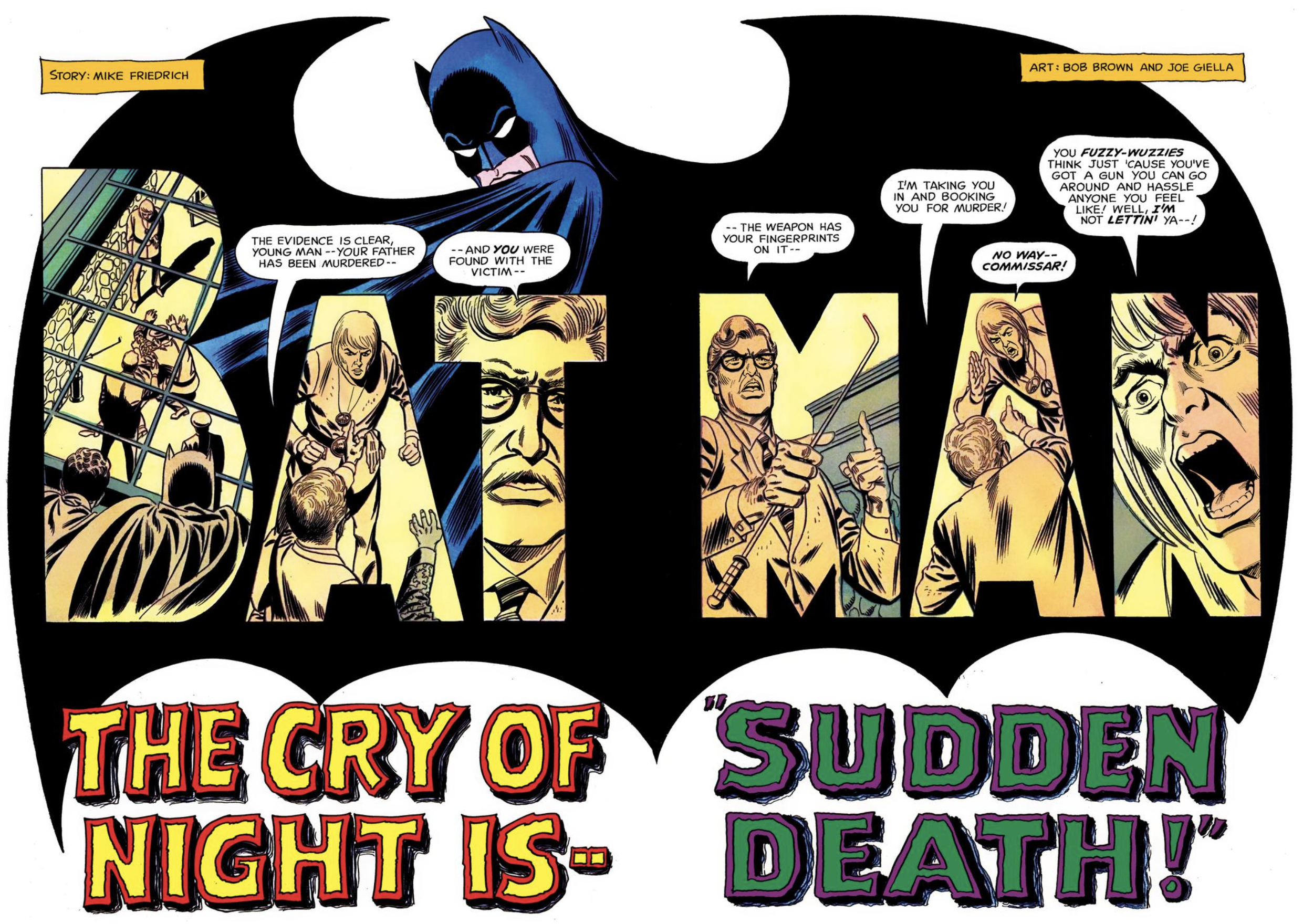
—
Detective Comics #388, “Public Luna-Tic Number One” (June 1969). Batman’s classic foes didn’t appear very often during this post-TV show phase but here is Bob Brown’s chance to draw the Joker and he does so very well! John Broome writes this time, trading also on the public’s fascination that year with all things moon-related. The strangest thing about this one is a footnote explaining to the reader that the Joker’s face glows in the dark due to the chemicals that he fell into years earlier. Huh?
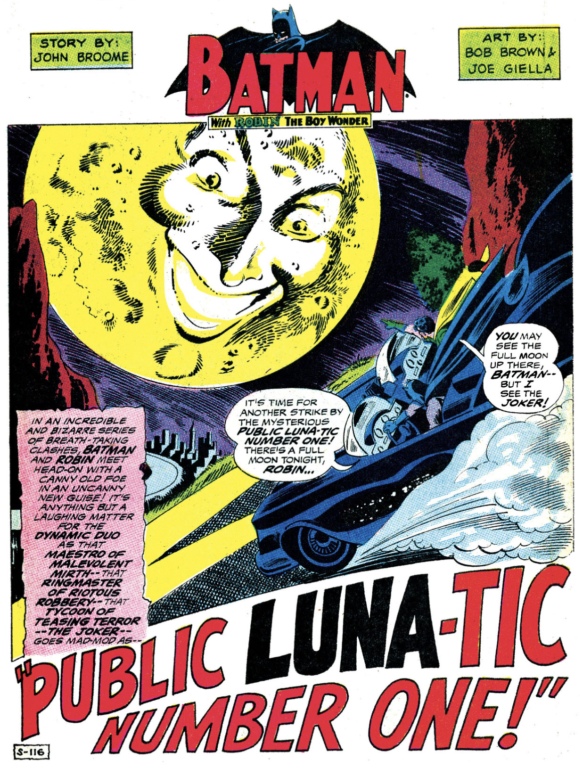
—
Detective Comics #390, “If the Coffin Fits—Wear It!” (August 1969). Presumably Brown created the mask and costume of this issue’s new costumed villain—The Masquerader. In this story, we find out for the first time ever where Batman gets his outfits — custom-tailored by Sam Tweed. The Masquerader finds that out, too… or does he? Another wacky tale but Brown really has the storytelling down by this point, and Giella’s inks continue a visual link to the early New Look Batman.
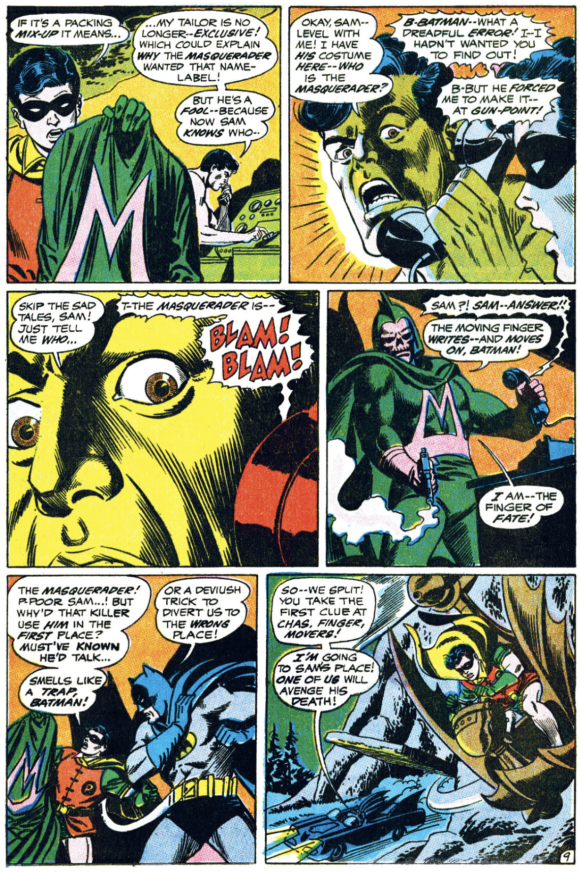
—
Detective Comics #396, “The Brain Pickers” (February 1970). Bruce Wayne becomes interested in an eccentric whiz-kid investor who’s also a motorcyclist. The Mob is interested too, however. Bruce and the kid’s stockbroker girlfriend work to find him when he disappears. Then Batman joins in. This is the Robin-less Caped Crusader then recently introduced in the Batman titles. Brown gets the chance to draw the sleek, new sportier Batmobile.
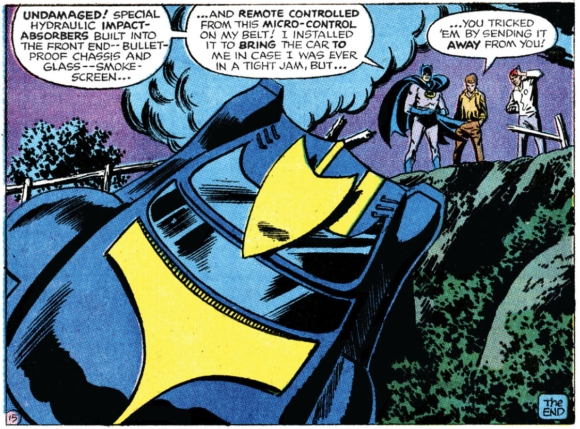
—
Detective Comics #405, “The First of the Assassins” (November, 1970). Contrary to popular belief, Neal Adams did not draw the first appearance of the League of Assassins. Bob Brown did! Denny O’Neil, of course, writes this story whose powerful splash by Brown has a new logo for THE Batman. Veteran Frank Giacoia’s inks give this a denser, more detailed feel than when Giella was inking. An inventively laid out page of Batman in the woods is a highlight of this issue.
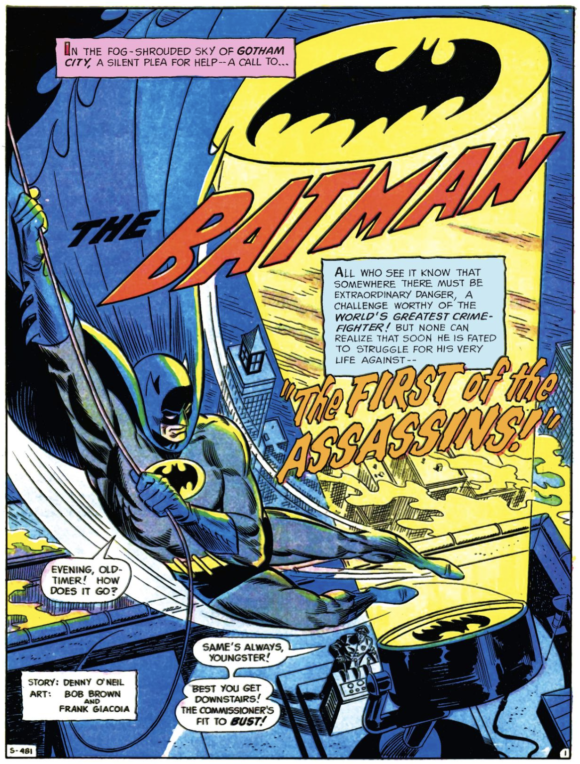
—
Detective Comics #411, “Into the Den of the Death-Dealers” (May 1971). Denny and the League of Assassins are back, this time giving Bob Brown first crack at introducing readers to Talia who, of course, will play a major role in Batman’s life ever after. She even evokes the name of Ra’s al Ghul for the first time, although we don’t yet meet him. Dick Giordano on inks this time out gives it all even more of a modern feel.
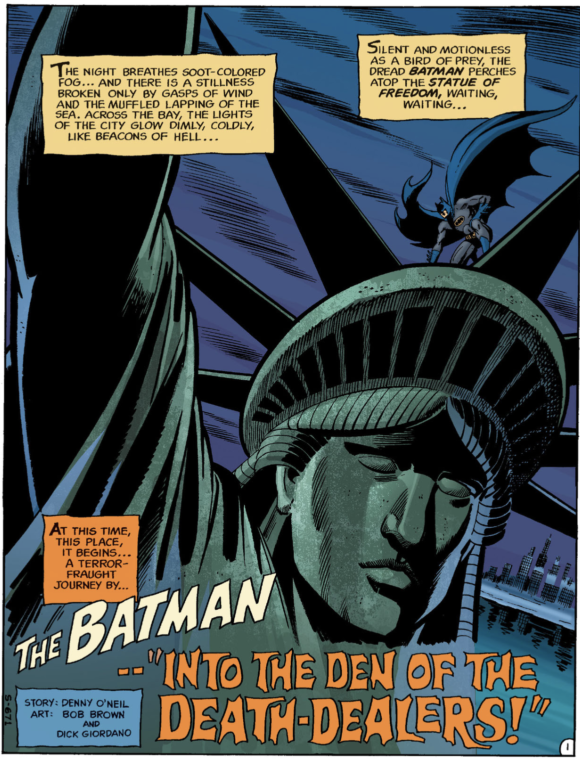
—
The Brave and the Bold #97, “The Smile of Choclotan” (August-September 1971). Back in the Haneyverse, Batman find his “old chum,” the apparently Earth-One Wildcat, with amnesia, boxing unrecognized (even though he’s wearing his Wildcat costume) as “El Tigre” in Mexico. With the help of a teenage boy, the two rout smugglers and discover a long missing giant, bejeweled statue. Brown is inked on this side trip by the great Nick Cardy, making this perhaps the best-looking Bob Brown Batman art of all. Cardy would ink Brown again on a Batman/Flash team-up in B&B.
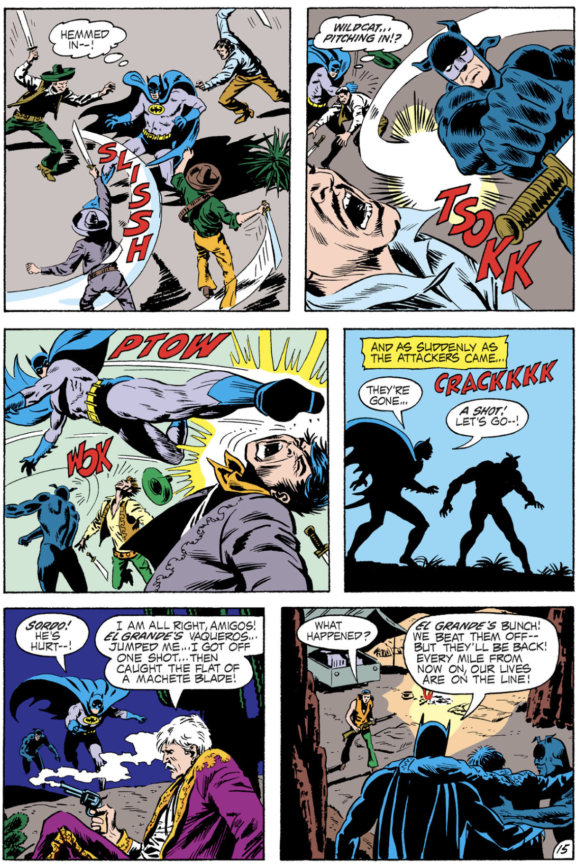
—
Detective Comics #428, “The Toughest Cop in Gotham” (October 1972). The Darknight Detective meets Steve “Shotgun” Smith, a tough-as-nails cop clearly inspired by Gene Hackman’s Popeye Doyle in The French Connection, released a year earlier. There’s kidnapping, heroin smuggling, corruption, and other movie cliches of the period. When Shotgun switches sides, it’s up to Batman to stop him… or is it? Shotgun’s a good character and returns in a later Robbins/Brown Bat-story.
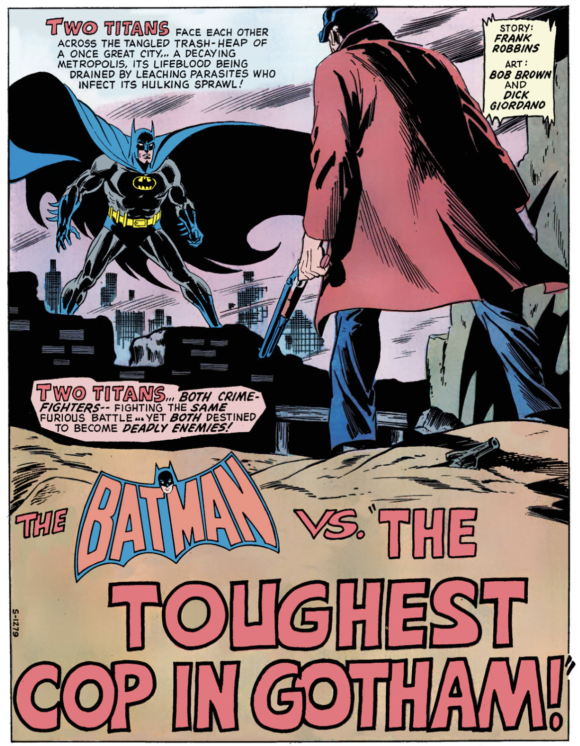
—
Detective Comics #432, “The Great Rip-Off Mystery” (February 1973). The story isn’t all that much but Brown reunites with his former Superboy inker Murphy Anderson for some nice looking pages! Murph had been inking a number of the back-up stories in Detective with Robin or Batgirl. Nice to see him up in the front of the book.
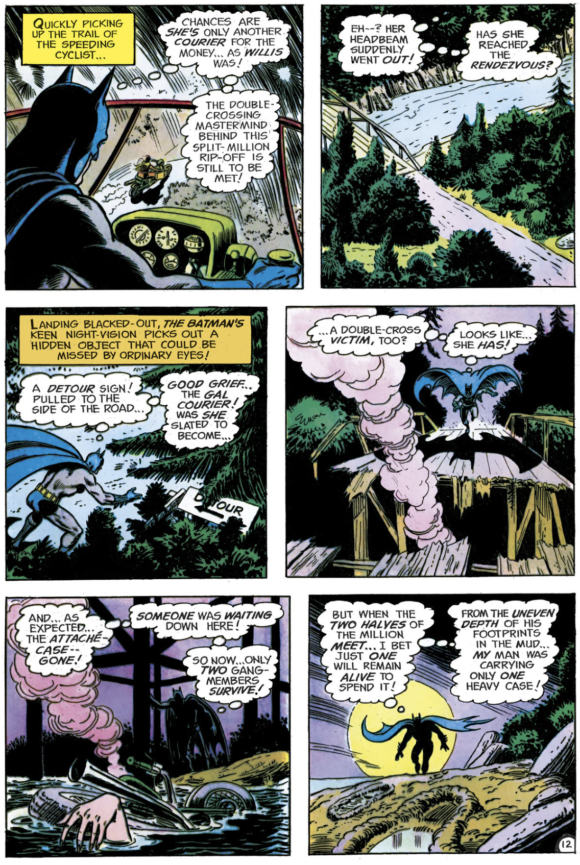
—
Batman #248, “Death-Knell for a Traitor” (April 1973). One of Brown’s final outings in Gotham, this is his only time in Batman rather than Detective. Written by O’Neil, the story itself feels like filler but the art, inked again by Giordano, is Brown’s best bat-work ever, light years from his awkward beginning just five years earlier. One completely silent, clearly Adams-influenced, page here of Batman sneaking onto a ship at night is absolutely stunning!
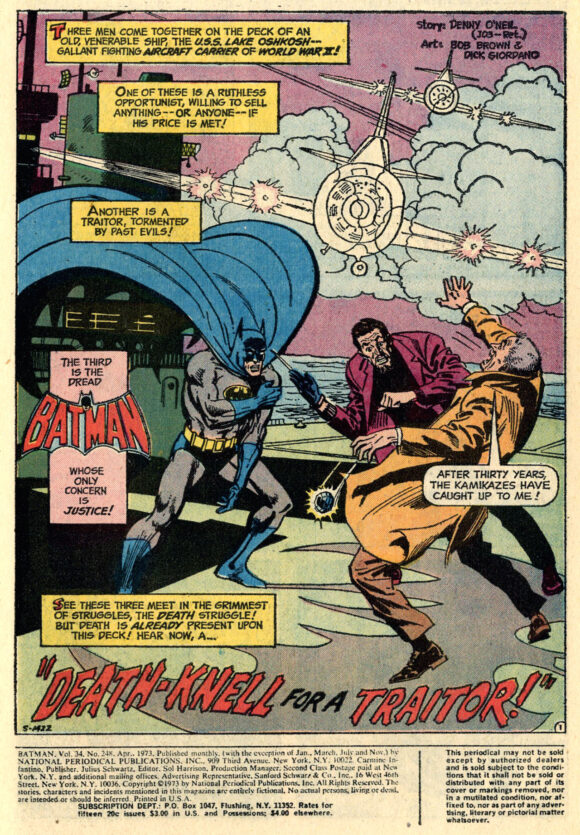
—
While Adams unquestionably remained more popular, by that point, Brown and Novick were really the main Batman artists. It would have been nice to watch Bob’s continued growth on the strip, but like many artists did, he went to Marvel. His last Batman-related work was a Batman Family story teaming Batgirl and Batwoman. Published posthumously in 1977, it sadly suffered from a particularly lackluster inking job by Vince Colletta.
Be sure to check out Back Issue #150 to find out more about Bob Brown’s Batman… as well as the Batman of Irv Novick, Frank Robbins and many others. The issue may ship this week and is due in comics shops March 13. You can also order it directly from TwoMorrows. Click here.
—
MORE
— SNEAK PEEK: BACK ISSUE #150 Is a BRONZE AGE BATMAN Feast. Click here.
— DENNY O’NEIL: Why IRV NOVICK and BATMAN Were an Excellent Match of Talents. Click here.

March 5, 2024
“While Adams unquestionably remained more popular, by that point, Brown and Novick were really the main Batman artists.”
Maybe in the two “main” titles, but for a lot of us, Aparo was right up there, given his steady and gorgeous B&B work.
March 5, 2024
As a kid in the 70’s Jim Aparo was the only Batman artist I was really aware of. I was more of a Marvel guy, so I didn’t buy as much DC back then. When I did buy Batman it was usually The Brave and the Bold, with Jim Aparo’s great art!
March 5, 2024
I love this! Bob Brown was awesome! Kudos to Steven Thompson!
March 5, 2024
So where’s Tales of the Batman: Bob Brown on my shelf? It’s omissions like this that made that series so frustrating. Maybe a future DC Finest release?
March 5, 2024
I confess, I always found Brown’s work kinda “meh.” Certainly okay–but not great.
But I’d like to join the shout out to Jim Aparo. Neal Adams was certainly great and certainly the definer of late 60s and 70s comic illustration. Yet Aparo is the one I really love–esp. during his peak gutsy, detailed realism period (say c. 1971 to 1976) that defined Batman, Phantom Stranger, Aquaman and the Spectre (etc.).
His sense of composition was always dynamical (without Adam’s occasional excesses) and his inking showed great use of chiaroscuro (the deep shadowing that made his work gritty and gutsy), and was the perfection of craftsmanship (Adams only looked good here, IMO, when Giordano was inking him–a bit too carefree or sloppy sometimes and otherwise)–and Aparo’s work here really influenced me in my art-major undergrad days.
March 5, 2024
I feel like Batman artist Ernie Chua doesn’t get enough love…
March 5, 2024
re: my last comment – ohhh, it’s Ernie CHAN? Not sure why the credits read Chua.
March 6, 2024
“Chua” was the way Ernie was credited on the splash pages for the various issues he worked on (I always thinking of him esp. as a Batman artist). Apparently, a glaring miscommunication between the upper echelons at DC and various letterers back in the day. “Ernie Chua” is always how I remember him too even if aware of the later correction.
March 5, 2024
Oh, I love it!
March 6, 2024
Nothing wrong at all with Brown’s work. I think he gets overlooked primarily because he was often tasked with illustrating somewhat goofy scripts, and simultaneously saddled with a minimalist inker. But let him run with a Denny O’Neil script and detailed inking by Giordano or Murphy Anderson or even Frank Giacoia as shown here, and he did great!
March 6, 2024
You can count me as part of the chorus singing the praises of Jim Aparo, but it is nice to see Brown and other unsung Batman artists being recognized.
March 6, 2024
In fairness to TwoMorrows, it is possible they don’t consider Jim as an “unsung hero”. Still very much looking forward to reading this issue.
March 13, 2024
Bob Brown was a capable BATMAN artist. I like many of the stories he worked on.
I wonder why Brown is credited along with Irv Novick as the artist for BATMAN #323 by Comic Vine.
March 13, 2024
Since we’re not Comic Vine, I couldn’t tell ya!